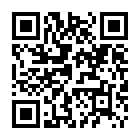The Influence of Twitter As Socialization Media of Presidential Candidates in 2014 Towards Young Voters’ Preferences. Oleh:
Twitter, Socialization Media, Presidential Candidates
DOI:
https://doi.org/10.23969/civicedu.v1i1.1194Abstract
This research was based on the increase of campaign attributes to welcome presidential election in 2014 which ruined the aesthetic of Bandung and ruined twitter usage by public, particularly the youth. Presidential election is one of the political participations used by Indonesian citizens. It goes every five years. Therefore, citizens need to know and recognize the figures of the candidates to prevent them from choosing the wrong one. But, this every-five-year democratic party frequently ruined the aesthetic of city. The campaign attributes brought by team success of candidates were often embedded randomly. People concerned it as a non effective way to introduce presidential candidates.
The development of science and technology has apparently affected all of human aspects, including politics. One of the new phenomenon happened to global society is cyberspace communication (twitter). The twitter facilitates people to know every information, track record, and trending topic about Indonesian presidential candidates in 2014. Students, as youth, has also taken their part in this election. Their parts were very important. The widespread use of twitter among students who have the right to choose definitely influenced their preference as young voters.
This research has three questions, (1) how are students’ presidential candidates preferences in Bandung?, (2) what are the biggest factors that influenced students’ presidential candidates preferences in Bandung?, (3) how much the influence of twitter among students or young voters in Bandung towards their presidential candidates preferences?
The writer used several theories to analyze the data. First of all, the writer used persuasive theory from Dan Nimo for X variable. Next, the writer used voters’ preferences theory from Ridwan for Y variable. In addition, the writer also took the survey using quantitave approach to find out the correlation between twitter and students’ preferences in Bandung towards presidential elections in 2014. The results of this research indicated that (1) young voters or students’ preferences in Bandung were twitter figures and popularities. It took 86% coefficient of determination. (2) the biggest factor which was influenced students’ preferences in Bandung was peer group’s opinions. It took 88% coefficient of determination. (3) social network –twitter- as socialization media of presidential candidates in 2014 had influenced young voters or students’ preferences in Bandung. It took 72% coefficient of determination.
Downloads
Downloads
Published
Issue
Section
License
Hak Cipta sepenuhnya berada di tangan jurnal.














